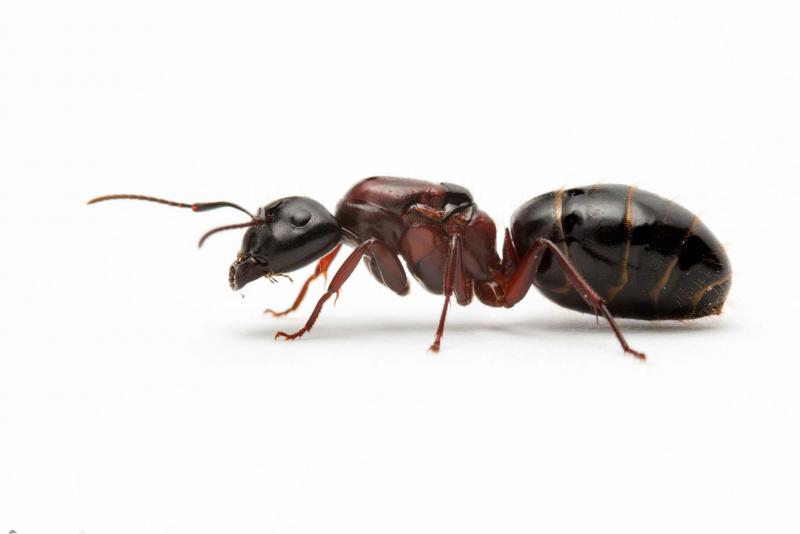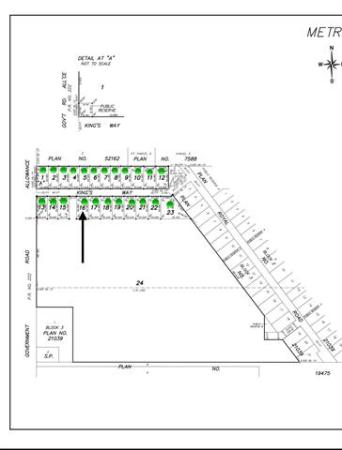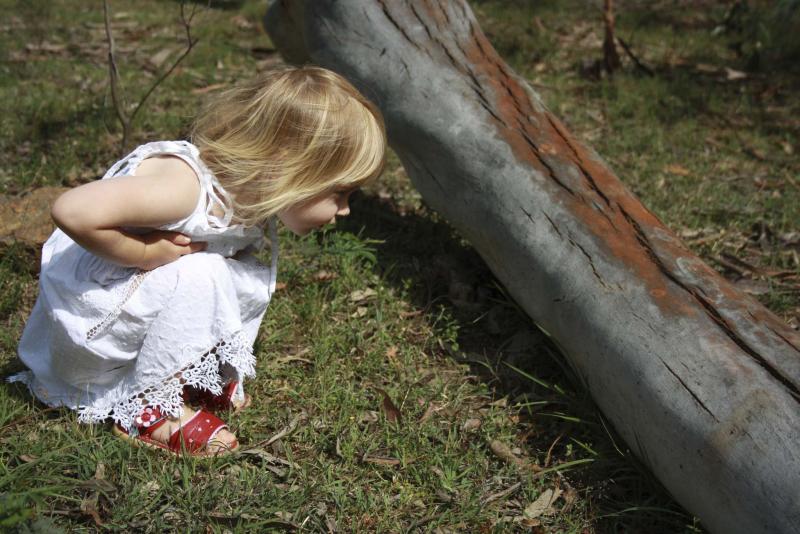
iStock Polly Rose
Ants live in underground colonies and in dead wood. It can be fascinating to watch ants at work.
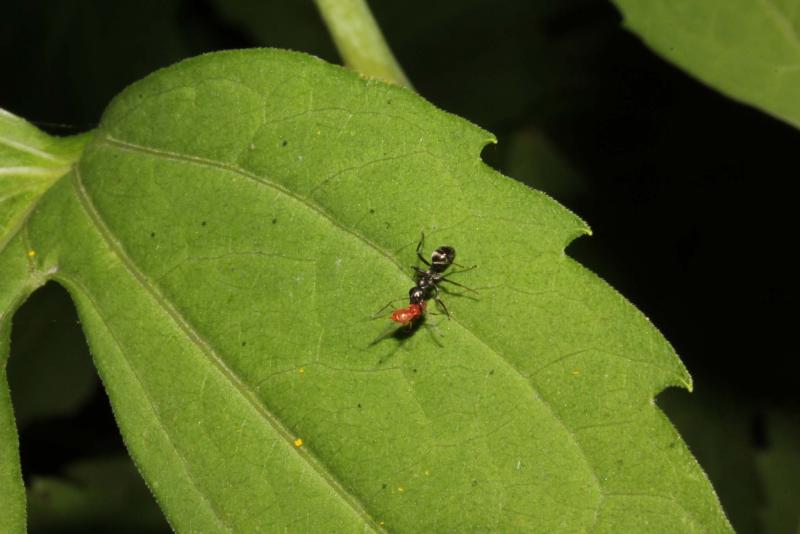
Pat MacKay and Bob Lamb
An ant in Riding Mountain National Park devours an aphid. The unusual predatory behaviour, caught by University of Manitoba researchers Pat MacKay and Bob Lamb, raises some interesting pest-control possibilities for gardeners.
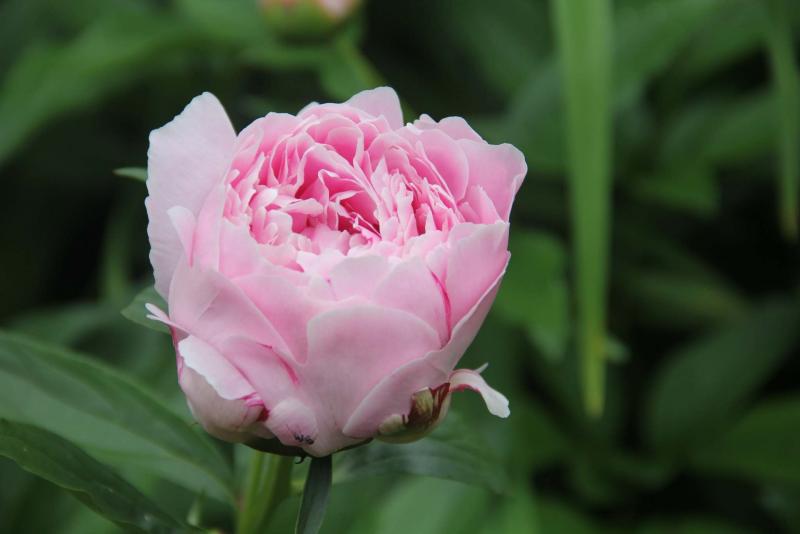
Roswitha Nowak
Ants on your peonies? Relax. They're enjoying the peony's nectar, a perfectly normal, harmless activity.
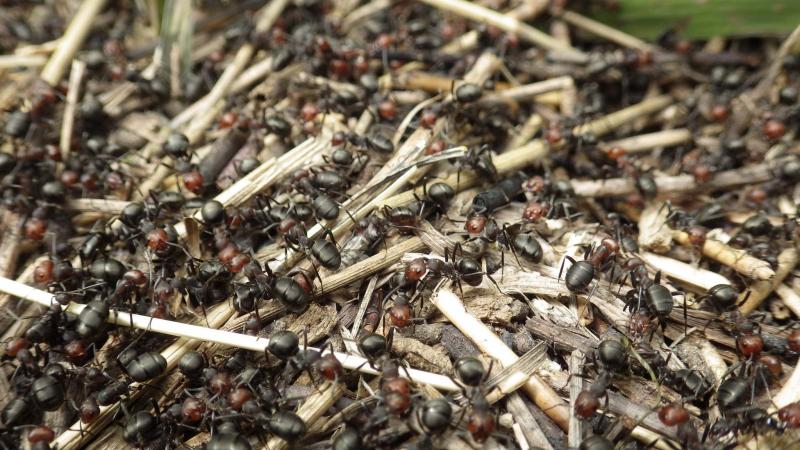
Sarah Semmler
On a sunny day, thatching ants can be found swarming, particularly in forested areas of Manitoba, on large mounds that they cover in dried vegetation.
Legions of ants have been on the march throughout most of this summer, building their tall dirt-filled mounds or extensive underground colonies in lawns and flowerbeds as well as small crater nests between paving stones. Homeowners have varying degrees of tolerance for this industrious species, whose habits can mess with our idea of landscape esthetics.
Fastidiousness turns to genuine concern and a call to action if the ant species happens to be the carpenter ant (Camponotus), which nests in decaying wood, excavating larger and larger galleries for their growing brood until significant damage has been caused to the structure (an old deck, for example). Ants can really raise the hackles of homeowners, though, when a colony is discovered to have taken up residence indoors.
The pharaoh ant (Monomorium pharaonis) is an invasive species that is especially troublesome. A pale brown to reddish insect that is about 1.5 to two millimetres in size, the pharaoh ant is about the same size as the little black ant (Monomorium minimum). However, an identifying characteristic is that the pharaoh ant is more hairy.
In the past 10 years, there were only minimal sightings of the pharaoh ant in Winnipeg residences. Today, the number of sightings of this household ant has grown exponentially. As a tropical species, it survives only in an indoor environment in our winter climate. The size of colonies — each with multiple — roving queens, can be substantial with nesting sites found in every conceivable area of an affected home. There are no chemical control methods available.
Let’s take a deep, collective breath.
A few troublemakers do not define an entire genus. There are probably 60 or more species of ants in Manitoba, says Terry Galloway, an entomologist and expert in insect taxonomy at the University of Manitoba. Ants (of the family Formicidae) live in colonies, and many species play an important role in the ecosystem.
"Some of the thatching ants," Galloway says, "have been considered as biological control agents for forest pests." Thatching ants are swarming ants that make big hills covered in dried vegetation.
Ants are especially important, according to Galloway, because of their impact on soil. The action of creating tunnels beneath the soil surface increases aeration, which allows greater penetration of air and water — an important ecological role. Worker ants also bring soil particles from deeper levels up to the surface.
A few ant species are important seed dispersers for certain species of plants that have specialized seed arils called elaiosomes. One example is the great white trillium (Trillium grandiflorum). When the seeds are shed by the plant, Galloway says, ants carry them back to their nest where they feed on just the elaiosome, a small light-coloured appendage that is located on the end of the seed. Fleshy structures that are rich in oils and proteins, elaiosomes attract ants who, once they have done feeding, discard the seed.
Ants’ better qualities aside, there is still that other matter of mounds and excavations. Formica fusca, a medium-size black ant, likes to build mounds, including some that are quite tall.
"Many species are found here in the heavy clay soils of the Red River Valley," Galloway says, "and they will also create spreading nests in lawns that can be up to half a metre across, with multiple entrances."
To ensure plenty of air access into their underground colony, ants will excavate soil around the grass roots. "Once the roots are exposed, the grass will turn yellow and die back," Galloway says.
This rarely goes over well with homeowners.
While Galloway is more inclined to watch and study the habits of the insect world, he does recommend vigilance and swift action when there are visible signs of activity by carpenter ants who build their nests inside soft or decaying wood. Carpenter ants excavate wood, especially water-damaged wood, rather than eat it and, in so doing, compromise its structural integrity.
Identification is key to solving the problem.
Carpenter ants are very large in size, with distinctive, rounded backs. Locally, there is one species that is all black and another with a reddish brown coloured thorax. Carpenter ants have a one-segmented waist (pedicel) between their smooth thorax and abdomen.
A mound of sawdust-like particles called frass is a sign of activity by carpenter ants. To test the structural nature of your aging deck or any wooden structure that you may have outdoors, tap it with a hammer, Galloway says, or poke it with a screw driver to see if the wood is becoming soft.
Taz Stuart, an entomologist with Poulin’s Pest Control in Winnipeg, says when it comes to chemical control measures, more does not equal better.
Adding a mountain of insect dust — with the active ingredient Chlorpyrifos, used to kill soil-inhabiting insects including ants — when all you need is a light dusting across a field ant colony that has taken over your lawn or flower bed is a misuse of the product and can have an adverse effect on soil and groundwater. Read the label, wear the proper personal protection equipment to reduce your exposure to chemicals and only use products registered for use against a specific insect.
Alternative methods, such as applying a homemade paste of Borax and sugar to the edges of an ant mound, will harm surrounding vegetation. You could be adversely affecting other species as well as accumulating Borax in your soil and plants as it gets absorbed, Stuart says.
With fall approaching, some outdoor ants will enter homes in their search for a food source. Ensure that weather stripping is intact around your doors and check to make sure that carpenter ants do not inhabit any firewood that you bring indoors. Stuart cautions that should you spot the appearance indoors of pharaoh or thief ants (Solenopsis molesta), another invasive species from the tropics, be scrupulous in removing any available sources of food. Patience will be required as it can take several months before professional ant control bait stations are successful in eradicating the problem.
Pat MacKay and Bob Lamb are insect ecologists with the Department of Entomology at the University of Manitoba. They specialize in aphid research. In research plots in Winnipeg and Riding Mountain National Park, MacKay and Lamb have witnessed and photographed ants preying on aphids. In one example, a black ant greedily devoured a red aphid. Typically, ants tend or farm aphids, feeding on the sugary solution (honeydew) that aphids excrete when they feed on plant sap.
Over the past 18 years that MacKay and Lamb have been studying aphids, this was the first time they witnessed an ant consuming an aphid. This raises a tantalizing possibility for gardeners who routinely battle aphids, which are vectors of plant viruses.
Be curious about ants, which are fascinating, social creatures. The next time you find ants on your peony buds as they gather to eat the sweet nectar produced by extrafloral peony nectaries, consider that this is a natural, harmless activity.
colleenizacharias@gmail.com
Notice:
Master Gardener courses start on October 14 at the Assiniboine Community College Winnipeg Training Centre, 1313 Border Street. To pre-register phone 204-725-8725. Orientation evening open to all on Tuesday, Sept. 12, 7 p.m. at Assiniboine Park Conservatory. Visit mgmanitoba.com for more details.

